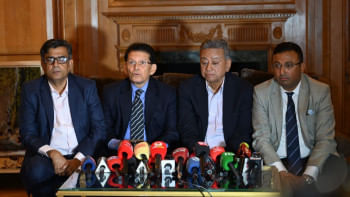Green innovation in Bangladesh

In the past few years, Bangladesh has been going through a digital revolution. Its economy is growing at 7%, and soon we'll be citizens of a middle-income country. However, as old industries like readymade garments and fisheries grow, and new industries like ICT emerge, one big concern remains: how do we balance high economic and technological growth with environmental sustainability?
Bangladesh is located in the Bengal delta, and while that has proven to be a blessing in many ways, it has some severe downsides. The country is prone to natural calamities, and we can see how global warming is affecting the weather. The climate has become somewhat extreme, which is an obvious sign that the environment around us changing rapidly. Sea levels are expected to rise by 1 metre in 2050. Now's the time to finally become environmentally conscious, or else this economic growth cannot be sustained.
Green growth means continued economic growth, without disrupting the natural environment. Lately Bangladesh hasn't been faring well in terms of natural conservation. Rapid, unplanned urbanisation is only adding to existing problems, such as air and water pollution and deforestation. But here's the thing, urbanisation cannot be stopped. What green innovation can do is to manage it. Green innovation can ensure that urbanisation and industrialisation does not happen at the cost of the environment.
Cityscape Tower is considered a cultural and business hub of Dhaka city, and while most of us have probably been there just to get coffee, this building is one of the pioneering structures that promote green architecture in the country. The building has a self-sustaining power and water supply. This ensures 40% less power consumption and reduces water wastage by 60%.
Green architecture heavily depends on generating renewable energy and recycling. Dhaka is extremely congested and polluted, so new building codes that emphasise environmental welfare can greatly help the decaying urban infrastructure of the city.
Another sector that can greatly benefit from green innovation is ICT. As the country moves towards digitalisation in all spheres of life, it generates more and more e-waste. Currently, electronic waste such as used batteries, appliances and cellphones are handled in quite an inefficient manner, with most of it generally ending up in landfills. E-waste contains tonnes of harmful chemicals, and due to improper recycling, these chemicals end up causing even more environmental pollution. As this rate, the heavy growth in the ICT sector will be offset by the tremendous harm that it's doing to our environment.
The proper way to handle e-waste, would be to create an efficient channel through which the user can dispose of it - a channel that does not involve vangariwalas or child labourers. This waste should finally end up in a proper plant that is equipped to rectify the damages that e-waste chemicals can cause.
Green innovation can have a huge impact on the country's banking sector. Through many small and some big changes in their operations, Bangladeshi banks are slowly moving towards a more environmentally conscious business model. In fact, Bangladesh Bank requires certain banks to allocate a budget dedicated to green banking. Institutions such as Dutch-Bangla Bank, Trust Bank, Bank Asia and more have started to implement small changes in their day-to-day activities, such as minimal use of paper, using e-statements instead of paper statements, and using e-mail communication over face-to-face meeting whenever possible. Bangladesh Bank is also encouraging online and mobile banking as green banking goals. Green banking has proven to be extremely convenient and efficient for both the customer and the company. It ensure the minimum wastage of resources.
Developing countries like Bangladesh have to play catch-up when it comes to green innovation. The country does not have to invent pioneering green technology, rather implement it in already-existing sectors. It is quite difficult to change existing practices, especially in the highly bureaucratic setting of Bangladesh, but it isn't impossible. The first step towards green innovation needs to come from the government. While they have been successful in pushing green technology in some sectors, such as banking, they haven't really looked into many other important sectors, such as construction and architecture. The green structures in Dhaka are all private ventures.
In order to adopt green technology, a country needs to be more open to international trade and foreign direct investment. Higher tariffs on renewable energy technologies, paired with subsidies for fossil fuels only hinder the growth of green innovation globally. At present, Bangladeshi government is using feed-in-tariffs to accelerate the renewable energy sector.
As the industries of Bangladesh continue to thrive and its population grows, the natural environment and climate of the country will continue to deteriorate unless proper steps are taken. Industries should adopt green technologies, while citizens should adopt a green lifestyle. If we all play our parts right, our economic growth will continue to be strong and sustainable.
The writer is the Sub-editor of Next Step, the career publication of The Daily Star. You can reach her at [email protected].

 For all latest news, follow The Daily Star's Google News channel.
For all latest news, follow The Daily Star's Google News channel. 



Comments